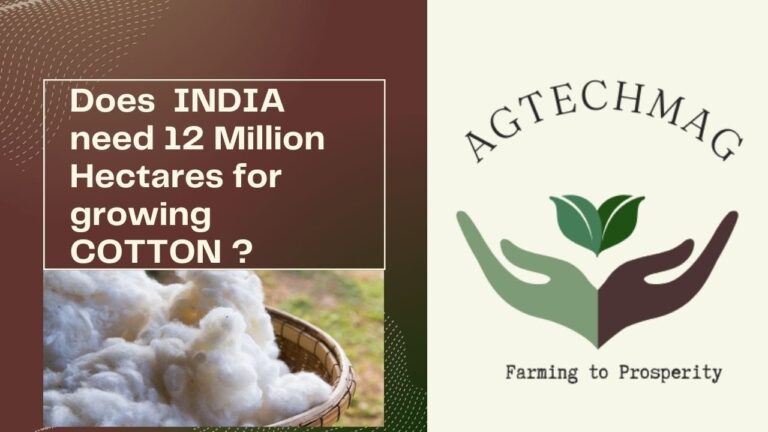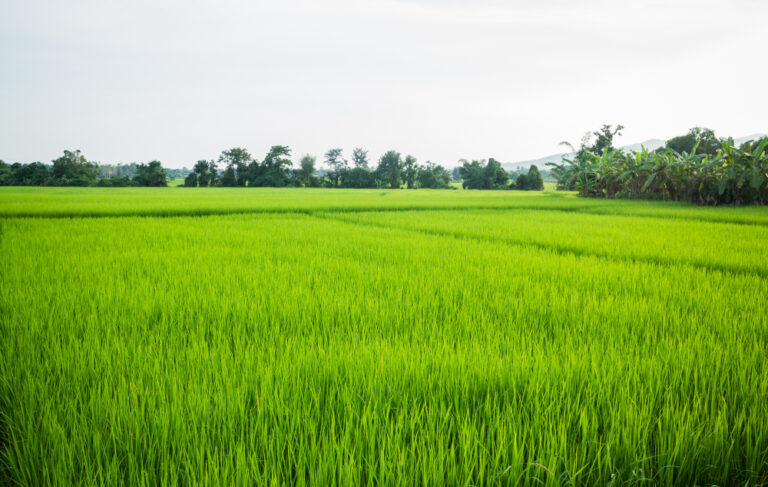
In India, cotton is grown on around 12 million hectares, mostly in 10 States, viz., Maharashtra, Telangana, Gujarat, Karnataka, Andhra Pradesh, Tamil Nadu, Punjab, Haryana, Madhya Pradesh, Odisha, and Rajasthan. Historically, all the four major cotton species, namely Gossypium herbaceum (Levant Cotton), Gossypium arboreum (Tree Cotton), Gossypium barbadense (Sea Island Cotton), and Gossypium hirsutum (American Cotton or Upland Cotton), were grown in India. In addition to the four major cotton species, there are 51 other species of cotton which are very rarely grown; however, they are part of the genetic diversity and germplasm pool of cotton.
India became the first country to develop hybrid cotton (H-4) in 1970, which was able to produce 25–30 percent more yield. Since then, farmers preferred to grow hybrid cotton, especially under irrigated and assured rainfall conditions, and its adoption increased year after year, reaching 60–70 percent of the total cultivation by the end of the 1990s. Most of these hybrids were of Gossypium hirsutum as it had a long staple length of 29 mm to 31 mm required for textile industry needs. Interspecific hybrids of Gossypium hirsutum × Gossypium barbadense were also launched, which had the characteristics of extra-long staple cotton with 32 mm–37 mm fibre staple length.
In 2002, India welcomed genetically modified (GM) cotton, with the trait of tolerance to pests of the butterfly and moth family Lepidoptera. These pests, which are mostly larvae or caterpillars of moths, had a devastating impact on cotton yields due to their attack on the bolls (cotton fruits which contain the lint or cotton fibre), causing economic damage to farmers. Farmers also excessively used pesticides to control these bollworms.
There were four types of bollworms, viz., American Bollworm (Helicoverpa armigera), Spotted Bollworm (Earias vitella), Armyworm (Spodoptera litura), and Pink Bollworm (Pectinophora gossypiella). GM cotton was designed to provide protection to cotton plants and bolls by a toxic protein, produced by a bacterial gene integrated into the cotton plant. However, the catch was that these GM cotton plants were developed in Gossypium hirsutum plants and were made available only in cotton hybrids. Ever wonder why? Because the developer and patent holder of the gene integrated into the cotton plant wanted to protect their intellectual property, as the farmer can use a hybrid only once and cannot reuse the seed.
Since 2004, the demand for GM cotton increased, and since GM technology was also available mostly in cotton hybrids, the area under GM cotton hybrids increased from nearly 60% in 2004 to 98% by 2014. Today, GM cotton hybrids are grown in 11–12 million hectares in India, with production ranging from 30 to 37 million bales of cotton (170 kg of cotton lint) in the past one decade. India has the largest area cultivated under cotton in the world and is the second-largest producer after China. However, the yields of cotton produced in India are comparatively very low when compared to cotton-growing countries like the USA, China, Australia, Brazil, etc. This is mainly due to the fact that 60% of the cotton area in India is mostly rainfed and 40% is irrigated. The average productivity in rainfed areas is as low as 300 kg lint per ha, and on average at the national level is around 470 kg lint per ha.
Further, India is the only cotton-growing country which predominantly grows hybrids. These hybrids are bushy and have a vigorous nature of growth, and only 10,000 to 15,000 plants can be accommodated per hectare at various plant-to-plant and row-to-row spacing. However, in other cotton-growing countries, cotton varieties, which are dwarf and leaner than hybrids, are grown, and nearly 50,000 to 120,000 plants can fit into one hectare in a high-density or ultra-high-density agronomy system which is commonly practiced in countries like China, Brazil, etc. For the past one decade in India also, farmers have adopted high-density planting (HDP) practices, growing 25,000 to 30,000 plants per hectare using compact cotton hybrids. Furthermore, the plant varieties, which are dwarf, perfectly fit into mechanized operations, including mechanical planting and picking by precision pickers, which save a lot of labor costs.
In India, cotton is still grown on 12 million hectares, and currently the second generation of double-gene insect-tolerant cotton plant hybrids are grown by farmers. A recent trend in the past five years especially is that farmers have started growing the third-generation herbicide-tolerant cotton hybrids, which also have insect tolerance genes, illegally, as this type of GM plant variety has not yet been cleared for cultivation by the environmental regulatory authorities. Another trend is the increase of sucking pests in cotton, which significantly reduce yield. Sucking pests like thrips, mites, whiteflies, jassids, and aphids, and the viruses they spread, have become a menace, and farmers use a lot of pesticides to control them. An important development that happened was, in 2008–09 the first generation GM cotton lost its power to one of the four bollworms, i.e., Pink Bollworm, which developed resistance to the toxic protein gene integrated into the cotton plant. This led the developer of GM cotton to release the second generation GM cotton. In 2015, the second-generation GM cotton gene also became susceptible to the Pink Bollworm, which causes significant yield losses. Now the cotton seed suppliers are looking at the third-generation GM cotton technology, which can provide tolerance to all the bollworms. Last but not least, labor scarcity is a huge challenge in India, and the preference of farmers for growing seeds of cotton hybrids amenable for mechanization is on the rise. This labor scarcity is also nudging farmers to adopt herbicide-tolerant GM cotton hybrids, even though it is illegal.
Finally, the cotton produced in India is grown in double the area compared to China, which grows the same amount of cotton in around 6 million hectares. This is because China has perfected cotton agronomic practices for ultra high-density planting in the Xinjiang region and other places. Further, the average smallholder Indian farmers, who have a landholding of less than 2 hectares, want yield guarantees under rainfed, low-resource, life-saving irrigation conditions and have adapted only to cotton hybrids and not cotton varieties under high density. This has led to sub-optimal yields, and Indian cotton fields are also not amenable to mechanized harvesting or picking. All the above contribute to the state of cotton production in India and also affect the fate of the textile industry. Last but not least, cotton procurement in India from farmers is still based on old standards, and fibre quality parameters need to be rewarded more than at present.
Despite all the challenges and threats, cotton farmers of India grow this commercial crop year after year, as they see it as a low-risk option for rainfed regions, and the price is also protected by the Government. However, by large-scale adoption of both high-yielding cotton varieties and hybrids with appropriate scientific agronomic practices such as HDP and micro-irrigation techniques, India can release at least 2–3 million hectares to more rewarding crops and can grow the same amount of cotton with higher productivity and value consciousness. In the years to come, this may become a reality, benefitting both farmers and the textile industry.
Tarak Dhurjati




